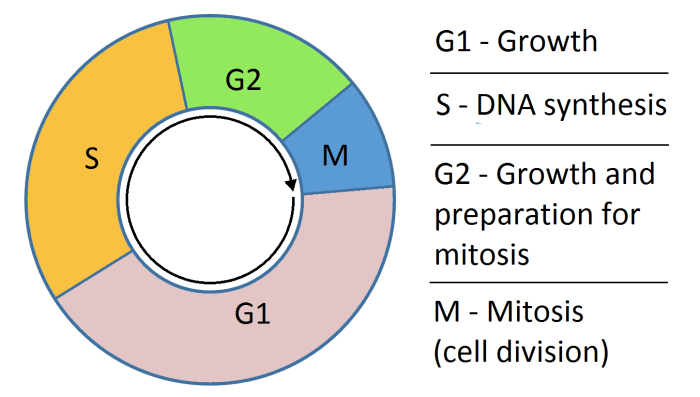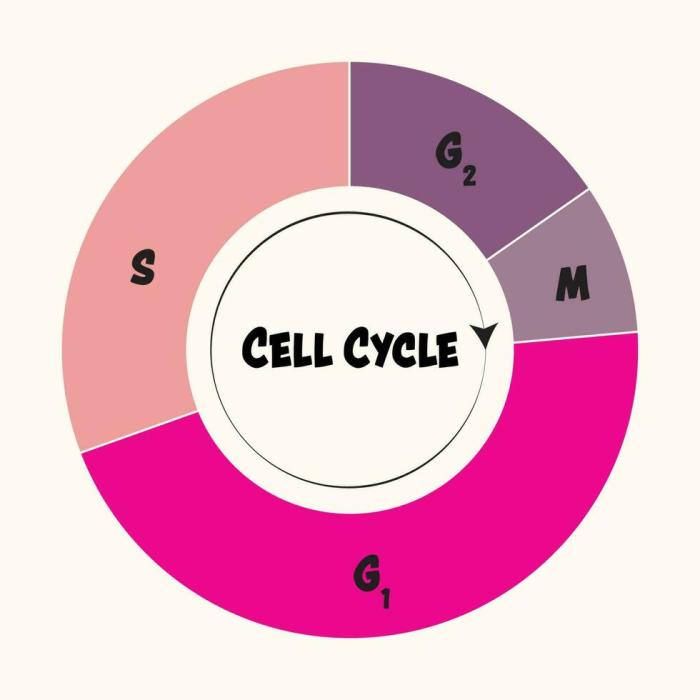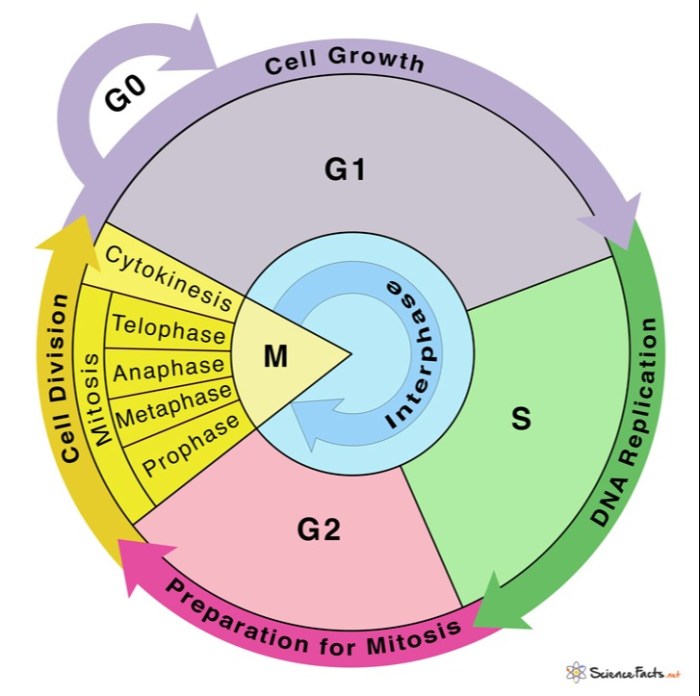Phases of the cell cycle mastering biology – Embark on a comprehensive exploration of the phases of the cell cycle, the fundamental process that governs cellular growth and division. From the intricacies of interphase to the dynamics of mitosis and cytokinesis, this article unravels the complexities of cell cycle regulation and its profound implications in cellular biology and disease.
Cell Cycle Overview: Phases Of The Cell Cycle Mastering Biology

The cell cycle is a fundamental process in cellular biology that governs the growth, division, and reproduction of cells. It is a continuous cycle that consists of several distinct phases, each characterized by specific cellular events and checkpoints.
The main phases of the cell cycle are interphase, mitosis, and cytokinesis. Interphase is the longest phase and is divided into three sub-stages: G1, S, and G2. During interphase, the cell grows, replicates its DNA, and prepares for cell division.
Mitosis is the process of nuclear division, where the duplicated chromosomes are separated into two identical daughter cells. Cytokinesis is the physical separation of the cytoplasm, resulting in two distinct daughter cells.
Interphase, Phases of the cell cycle mastering biology
Interphase is the longest phase of the cell cycle, accounting for approximately 90% of the total cycle time. It is divided into three sub-stages: G1, S, and G2.
- G1 phase (Gap 1):The G1 phase is the first sub-stage of interphase. During this phase, the cell grows and increases in size. It also synthesizes proteins and RNA in preparation for DNA replication.
- S phase (Synthesis):The S phase is the second sub-stage of interphase. During this phase, the cell replicates its DNA. Each chromosome is duplicated, resulting in two identical sister chromatids.
- G2 phase (Gap 2):The G2 phase is the third sub-stage of interphase. During this phase, the cell checks for DNA damage and repairs any errors. It also synthesizes proteins and RNA in preparation for mitosis.
Mitosis
Mitosis is the process of nuclear division, where the duplicated chromosomes are separated into two identical daughter cells. It is divided into four distinct stages: prophase, metaphase, anaphase, and telophase.
- Prophase:During prophase, the chromosomes condense and become visible. The nuclear envelope breaks down, and the spindle fibers form.
- Metaphase:During metaphase, the chromosomes align along the equator of the cell. The spindle fibers attach to the chromosomes and begin to pull them apart.
- Anaphase:During anaphase, the sister chromatids of each chromosome are separated and pulled to opposite poles of the cell.
- Telophase:During telophase, the chromosomes reach the poles of the cell and the spindle fibers disappear. The nuclear envelope reforms around each set of chromosomes, and the cell begins to divide.
Cytokinesis
Cytokinesis is the physical separation of the cytoplasm, resulting in two distinct daughter cells. It follows mitosis and ensures that each daughter cell receives a complete set of chromosomes.
In animal cells, cytokinesis occurs by a process called cleavage furrowing. A cleavage furrow forms on the cell surface and gradually pinches the cell in two. In plant cells, cytokinesis occurs by cell plate formation. A cell plate forms between the two daughter cells and gradually grows until it fuses with the cell walls.
Regulation of the Cell Cycle
The cell cycle is tightly regulated to ensure that cells divide in a controlled and orderly manner. Several checkpoints are in place throughout the cycle to monitor for errors and prevent cells from dividing if there are any problems.
The main checkpoints are the G1 checkpoint, the G2 checkpoint, and the spindle checkpoint. The G1 checkpoint occurs at the end of the G1 phase and checks for DNA damage. The G2 checkpoint occurs at the end of the G2 phase and checks for DNA damage and errors in chromosome replication.
The spindle checkpoint occurs during metaphase and checks for proper attachment of the spindle fibers to the chromosomes.
Cell Cycle Disorders
Disruptions in the cell cycle can lead to various disorders, including cancer. Cancer is characterized by uncontrolled cell division, which can lead to the formation of tumors and metastasis.
Other cell cycle disorders include:
- Apoptosis:Programmed cell death that occurs during normal development and in response to certain stimuli.
- Necrosis:Uncontrolled cell death that occurs in response to injury or disease.
- Cell senescence:A state of permanent cell cycle arrest that occurs in response to aging or other factors.
FAQ Explained
What is the significance of the cell cycle?
The cell cycle is essential for cellular growth, reproduction, and repair, ensuring the proper functioning and development of multicellular organisms.
How many stages are there in interphase?
Interphase consists of three distinct stages: G1 (cell growth), S (DNA replication), and G2 (preparation for mitosis).
What is the role of checkpoints in the cell cycle?
Checkpoints are control mechanisms that monitor the cell cycle and ensure the accuracy of cell division by preventing progression to the next stage if errors are detected.


